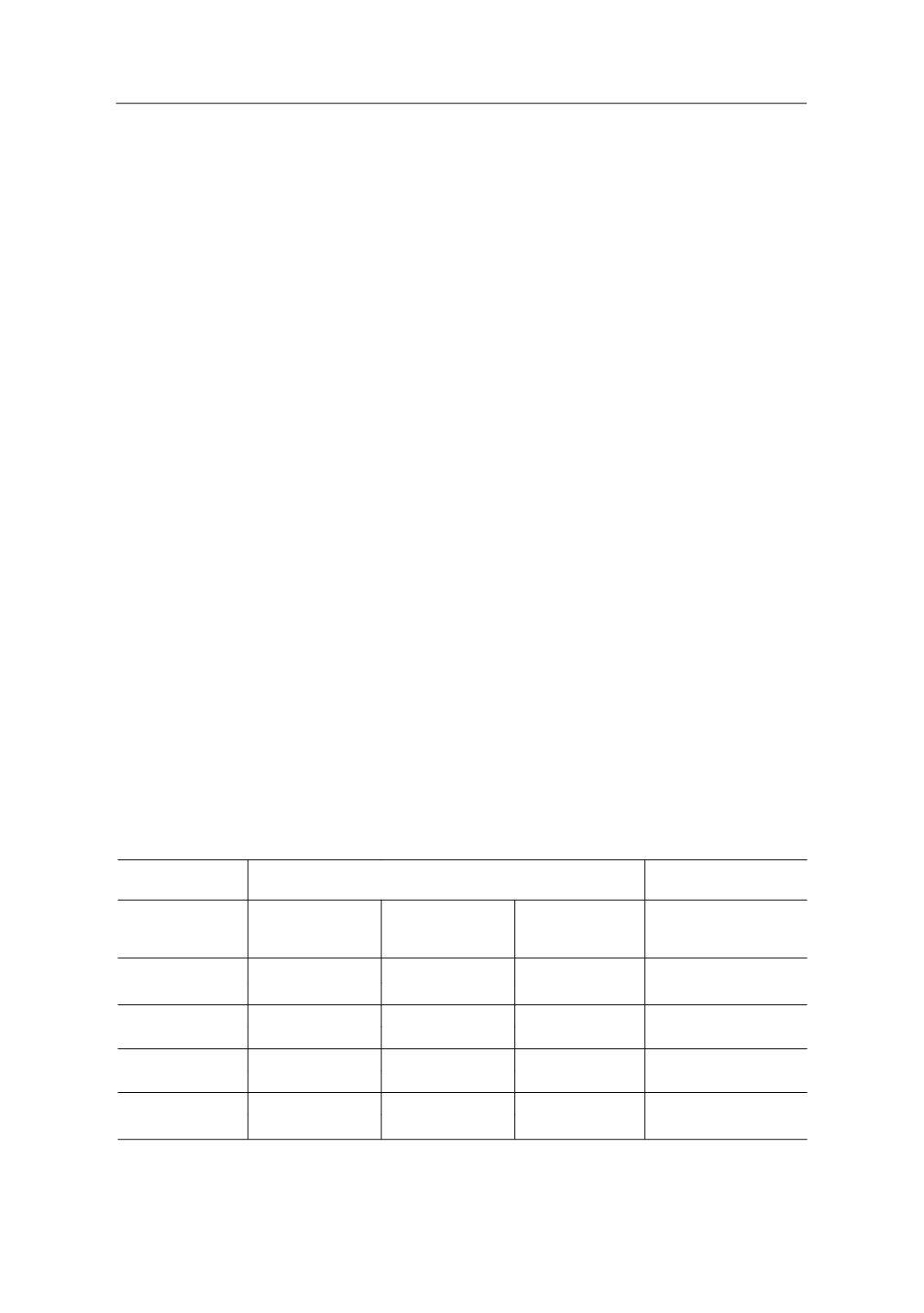
© Benaki Phytopathological Institute
Kioulos & Koliopoulos
24
tion but it increased significantly during the
following days (88% and 83%, 6 and 15 days
after Aquatain
TM
application, respectively)
and was significantly higher than mortality
in line 3. Larval mortality in line 3 increased
and reached its highest level (42%) six days
after application.
Increase of larval mortality over time in
lines 2 and 3 can be attributed to the time
needed for the spread of the product. Fur-
thermore, three days after the application of
Aquatain
TM
(first assessment) all cages in the
paddy were found above the water surface
as the amount of irrigation water could not
maintain the water level. Thus, there was ad-
equate water in the traps to keep mosquito
larvae alive but Aquatain
TM
could not enter
into the cages except for those in line 1. Ad-
justment of the supporting poles after the
first assessment, allowing the water to cov-
er half of the cage opening, is also associat-
ed with time period of the mortality levels
increase in lines 2 and 3.
The complete coverage of the experi-
mental paddy occurred at slower mode than
that reported in other studies (Bukhari
et al.,
2011). This could possibly be due to high-
er density of the rice plants as in our case
Aquatain
TM
was applied relatively late in the
season, after tillering had been completed.
Aquatain
TM
remained highly effective in
lines1 and 2 for at least 15 days (larval mor-
tality rates ranged up to 95% and 83%, re-
spectively). Environmental factors (rainfall,
strong winds) as well as cultivation tech-
niques may possibly influence the efficacy
of Aquatain
TM
over extensive and verdant
mosquito breeding sites. For this reason
Bukhari
et al.
(2011) recommended a reap-
plication of 10 – 14 days in rice paddies in
Kenya in order to effectively control mosqui-
to larvae. However, in container mosquito
habitats Aquatain
TM
provided effective con-
trol of mosquito larvae for at least 4 weeks
at the labelled dose-rate (1ml/m
2
) and thus
the recommended reapplication frequency
is every 4 weeks even though a longer larval
control may be achieved with a single appli-
cation (Webb and Russell, 2012).
In conclusion, our study showed that
Aquatain
TM
is an effective control agent
against mosquitoes not only in small or
closed water ecosystems (Webb and Rus-
sell, 2012), but also in extensive water sur-
faces such as rice paddies. It causes death of
the existing mosquito larvae and pupae of a
breeding site (Webb and Russell, 2009) and
it can offer sufficient protection from the de-
velopment of newmosquito generations for
at least 3 weeks.
Table 1.
Mean larval mortality (±SE) and percentage mortality (%) of L
4
mosquito larvae of
Culex pipiens
in cages over a period of 25 days after application of the product Aquatain
TM
in
a rice paddy in the Prefecture of Phthiotida, Greece.
Experimental paddy
Control paddy*
Days after
application of
Aquatain
TM
line 1
line 2
line 3
lines 1,2,3
(pooled data)
3
20.0 ± 0.0
5.67 ± 5.13
0.0 ± 0.0
1.0 ± 1.0
(100%) a§
(28%) b
(0%) b
(1.67%) b
6
20.0 ± 0.0
17.67 ± 3.21
8.33 ± 2.08
1.33 ± 0.56
(100%) a
(88.3%) a
(41.7%) b
(2.22%) c
15
19.0 ± 1.0
16.67 ± 0.58
5.33 ± 2.08
0.33 ± 0.57
(95%) a
(83.3%) b
(26.7%) c
(0.56%) d
25
14.0 ± 1.0
5.0 ± 1.0
2.0 ± 1.0
1.33 ± 1.15
(70%) a
(25%) b
(10%) c
(2.21%) c
* Without application of Aquatain
TM
§ Different letters within rows indicate statistically significant differences.


